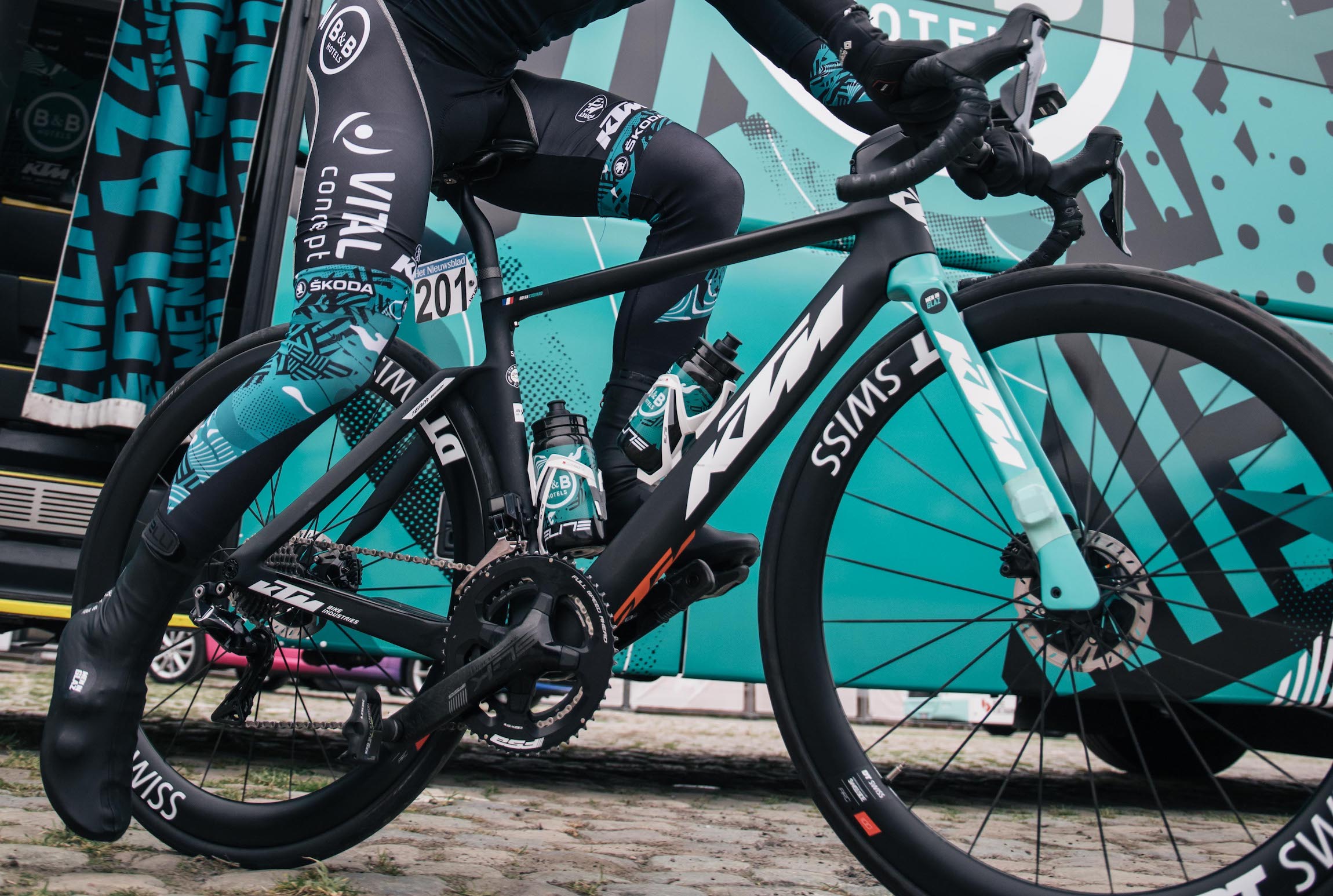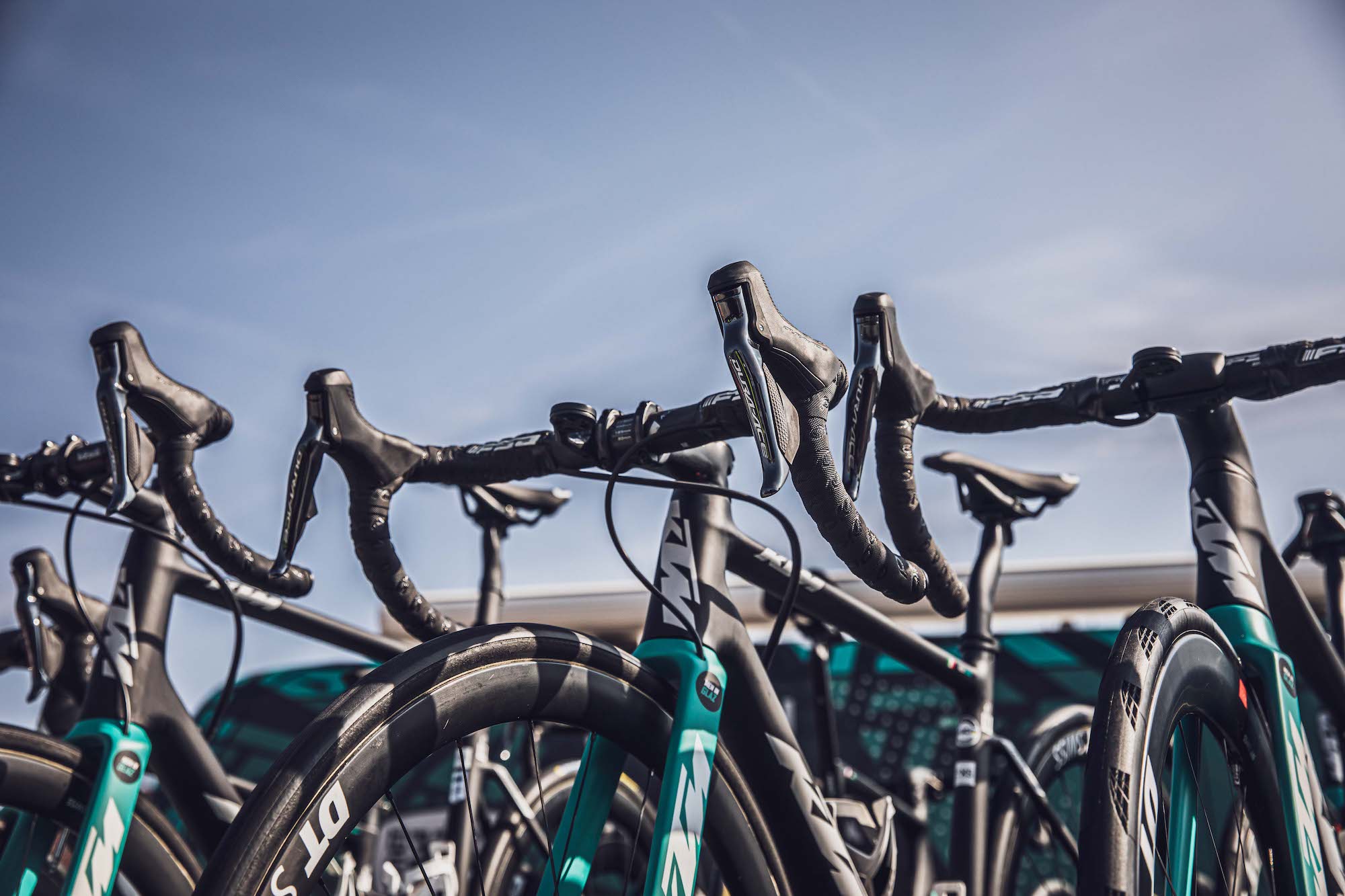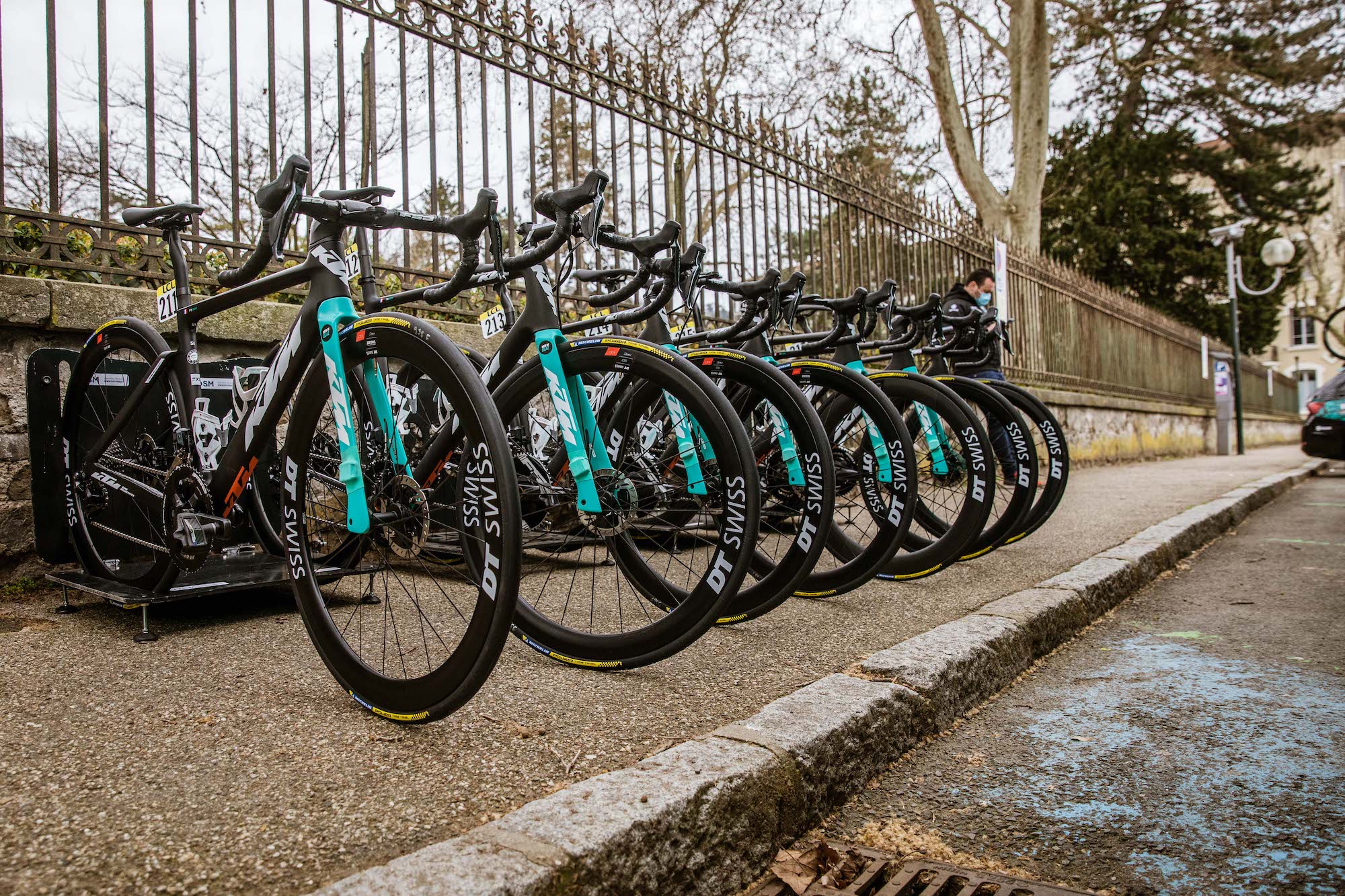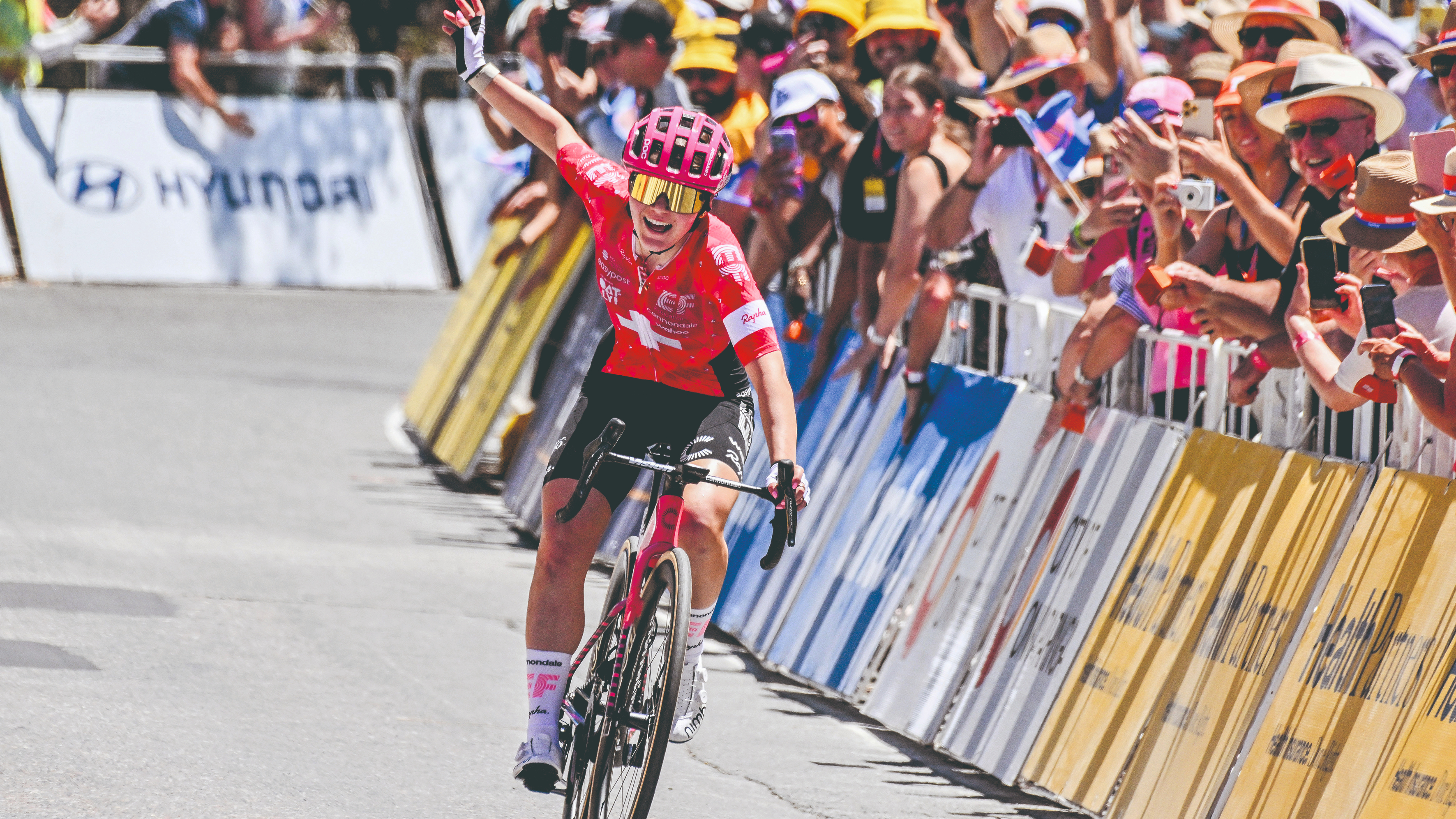Dos and don’ts from the pros’ bike set-ups
Aero wheels - yeah, oversized pulley wheels - not so much. Here’s our pick of pro tech to emulate and what’s best left to sponsored riders


Promotional feature with KTM
Pro cyclists ride tip-top bikes with premium components and they’re constantly in search of the mythical marginal gain that will give them the edge.
Unless you’ve got very deep pockets, following the pros is an expensive business for the amateur though and without someone to foot the bill, you probably want to be a bit selective in where you splash your cash.
So here’s a run-down of pro bike features that we reckon you should think about adopting - and those you can probably do just as well without.

Tech to adopt from the pros
Power meter
If you’re looking to up your cycling game, a power meter has become an indispensable tool. It’s not about bragging rights; keeping track of your power output will let you make sure your training is on track, measure your efforts and see if you need to rest up and recover.
It’s a device no pro would be without and, although still expensive, an affordable option for many amateurs too
Aero everything
Pros’ bikes are now as aero as can be, with aero frames, aero wheels, aero handlebars and aero cabling. Each on its own may not add much to how slippery your bike is - and a lot of a cyclist’s wind resistance is still down to the rider, not the bike - but overall they’ll make you just that bit faster.
There’s little or no weight penalty for aero features in a modern bike either so it’s free speed, and unless you’re spending the whole day climbing steep hills the aero benefits trump lighter weight.
Carbon wheels
Once an expensive option, deeper section carbon wheels are now an affordable upgrade for many riders. They’re also easier to live with, with more stable handling than earlier designs.
As well as the aero benefits, the lighter, stiffer rim will lower inertia and up your ride quality. With modern bikes now usually disc brake stopping isn’t an issue, they won’t overheat and you’ll not wear through your rims.
Tyres and tyre pressures chosen for your route
Pros will swap out their tyres (and their wheel depths) for the conditions, going for lighter, narrower tyres for smoother races and wider tyres which they can run at lower pressures on cobbled routes.
That’s harder to do for an amateur, but changing tyres with the seasons makes a lot of sense. A more substantial, grippier tyre will give you added durability for winter riding, while changing back to a lighter tyre for the summer will make for a more responsive ride feel.
Tyre pressure is important to get right too. In the wet, a slightly lower pressure will up your grip. It’s something the pros fret about and which they’ll adjust depending on the conditions. Like the rest of us, they’ve switched from 23mm to wider tyres for more comfort and all-round better grip and handling.
Saddle tilt
To add a bit more comfort in the low position dictated by their slammed stems, pros will often have a bit of forward tilt to their saddles. It’s something that helps them hold their position on the bike a bit better too. The UCI frowns on too much tilt though and will regularly check that saddle angle is not greater than nine degrees.
A slight slope to the saddle is something that will benefit amateurs too, making for more efficient riding. Don’t take it too far though, even if you don’t have the UCI looking over your shoulder.

Tech you shouldn't adopt from the pros
Pro gears
Pro gearing tends to be higher than that used by us mortals. After all, they’re riding fast in a group a lot of the time and they’ve trained for the hard efforts when they come. So except for major mountain stages, pros will often ride with a 53/39 tooth chainset and an 11-25 or so cassette.
For the rest of us, that sounds like hard work and a recipe for soreness the next day. Pros’ mechanics will swap out their cassettes to change ratios dependent on the terrain too - something that’s time-consuming and messy if you have to do it yourself.
Fortunately, bike gearing is now a lot kinder to the novice and a 50/34 tooth compact chainset paired with a cassette with a largest sprocket heading up over 30 teeth gives a lot more flexibility and hill climbing grunt. If you want slightly higher gearing, a semi-compact 52/36 tooth chainset is a good option and can be paired with a wide range cassette for lots of versatility.
Top end groupset
Range topping gears are a thing of beauty, with superb finish, light action and high end materials like carbon fibre and ceramic bearings. It’s great to feel that you’ve got pro-level tech on your bike. But they’re also hugely expensive and the light build means that they’re fragile and can wear quickly.
Choose a rung or two below the top and you’ll get pretty much the same look and feel, with extra durability for an additional couple of hundred grams in weight max. You won’t be forking out £500 if you break your rear derailleur either.
Tubular tyres
Pros are still glued to their tubs. But they’ve got teams of mechanics to look after them and following cars to give them a new wheel if they get a puncture. Even so, tubulars seem to lose riders more races through ill-timed flats than they win for them.
For the rest of us, not getting a flat in the first place is more important. Tubeless clincher tech helps with that and there’s little weight difference between modern tubular and tubeless wheels. Tubeless tyres roll faster too.
If you do get a flat, unless you’re a dab hand with a needle and thread, it’s the end of a tub - that’s the best part of £100 thrown away. A spare tub is awkward to carry too.
Ceramic bearings
Anything that rotates on a bike, from headsets to chainsets, wheels and pedals can be found with a ceramic bearing option. You’ll find impressive figures bandied around for watts saved.
But ceramic bearings are significantly more expensive than steel and a high quality steel bearing will be almost as efficient. The difference in hardness between ceramic balls and a steel race may increase the wear rate too.
Bearings will in any case wear out and need replacing over time. With modern cartridge bearings, that’s reasonably quick and easy. But do you really want to up your maintenance costs by several hundred pounds to save a few watts?
Over-sized pulley wheels
OSPWs crop up in quite a few shots of pro bikes. That’s where the jockey wheels on the rear derailleur are extra-large and usually come with ceramic bearings. The slower rotation, smoother bearings and lower movement between the chain links can save you up to 4 watts, it’s claimed.
But in most cases, you’ll be paying almost £300 for the privilege. Put the cash towards a wheel upgrade - although we can’t deny that OSPWs look cool.
Slammed stems
The first thing a pro does to a bike is throw away all the spacers under their stem, so that the front end of the bike is as low as possible. That’s great if you’re going to be on an all-day breakaway and want to reduce your frontal profile - and so your air resistance - to a minimum.
But for the rest of us, it’s a recipe for backache, neckache and shoulder aches which we don’t have a masseur to sort out for us at the end of a ride. It may also reduce your ability to keep an eye on your surroundings.
So don’t ditch the spacers and you’ll have a more comfortable, more enjoyable ride, even if it means you’re not going to win the stage’s sprint finale.

Thank you for reading 20 articles this month* Join now for unlimited access
Enjoy your first month for just £1 / $1 / €1
*Read 5 free articles per month without a subscription

Join now for unlimited access
Try first month for just £1 / $1 / €1
Get The Leadout Newsletter
The latest race content, interviews, features, reviews and expert buying guides, direct to your inbox!
Paul started writing for Cycling Weekly in 2015, covering cycling tech, new bikes and product testing. Since then, he’s reviewed hundreds of bikes and thousands of other pieces of cycling equipment for the magazine and the Cycling Weekly website.
He’s been cycling for a lot longer than that though and his travels by bike have taken him all around Europe and to California. He’s been riding gravel since before gravel bikes existed too, riding a cyclocross bike through the Chilterns and along the South Downs.
-
 How do the pros train? Noemi Rüegg's 26 hour training week
How do the pros train? Noemi Rüegg's 26 hour training weekWinner of this year’s Tour Down Under, the EF Education-Oatly rider is a climber whose talent is taking her to the top
By Chris Marshall-Bell
-
 Save £42 on the same tyres that Mathieu Van de Poel won Paris-Roubaix on, this Easter weekend
Save £42 on the same tyres that Mathieu Van de Poel won Paris-Roubaix on, this Easter weekendDeals Its rare that Pirelli P-Zero Race TLR RS can be found on sale, and certainly not with a whopping 25% discount, grab a pair this weekend before they go...
By Matt Ischt-Barnard